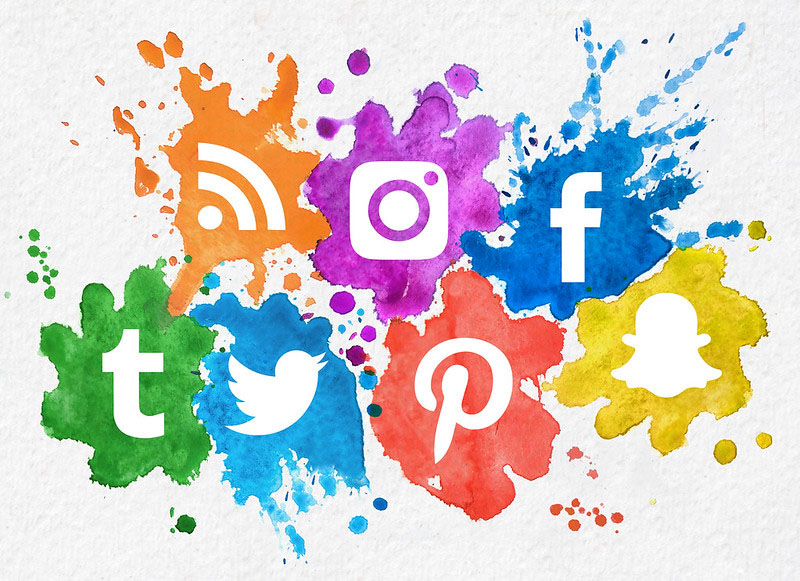
To the Teacher
Young people are spending more time online, and on social media, than ever before. This has caused consternation among some parents and lawmakers concerned about the negative impacts of social media.
However, many students have developed more nuanced approaches, finding their own ways to tap the benefits and mitigate the harms of social media.
This activity includes two readings. The first reading looks at how young people are using social media to find support. The second points to some challenges that young people—particularly those who are members of marginalized communities—face while using social media.
Following the readings, students share (in pairs and with the full group) their own experiences and consider possible ways to address the challenges they’ve experienced on social media.
Opening Circle
In a go-round, ask students to share in turn:
- What is your favorite social media platform?
- Why?
Readings: Exploring the Benefits and Harms
Ask students to volunteer to read the following excerpts from two articles.
The first article explores the positive impact of social media and online platforms in developing and supporting young people. The second explores the negative impacts of these platforms, including on young people in marginalized communities.
Reading 1: Finding Support
In an April 2021 article for The Conversation, graduate student researcher Benjamin Kaveladze summarized his recent study on young people seeking community support online:
Popular criticisms, such as the 2020 documentary “The Social Dilemma,” have argued that social networking sites like Instagram warp young users’ perceptions of reality, causing them psychological distress….
These concerns have some merit, but they may underestimate young people’s resilience and ability to adapt to new social contexts. Online communities can also provide opportunities for young people to build social skills, share genuine interactions and discover and dissect new ideas with peers worldwide….These support forums provide users with valuable advice, emotional support, belonging, and validation that are not available from their in-person communities…
Many young people experiencing personal struggles turn to online communities to seek support. Some reach out to text-message group chats of close friends to vent and ask for advice. Others prefer to privately seek help from strangers around the world in anonymous support forums like Reddit’s r/Anxiety, which often has over 1,000 members online at any given time.
Online, young people can avoid the social stigma that often comes with asking for help in person and are not limited by geographical barriers to find peers who share their backgrounds or perspectives.
Reading 2: Experiencing Harm
Online exposure to racism, sexism, ableism, homophobia, and more can come without warning and affect a wide range of young people. In a December 2018 article for New America, policy analysts Spandana Ringh and Dillon Roseen wrote of the case of one young person whose life was disrupted by online harassment:
For Rabia, it didn’t take long for the abuse to start. Shortly after landing the editorial internship of her dreams and publishing her first major story, she began receiving vitriolic threats and insults across her personal and professional accounts online. The flood of incoming messages was overwhelming and deeply personal, often infused with overt anti-Muslim and sexist language. As soon as Rabia reported one threat to an online platform, another three would pop up to take its place.
As the online attacks against her grew, so did the consequences. First, she was doxxed—her cell phone number, home address, and the names and addresses of her family were shared online. Unsurprisingly, after this, she and her family received calls from people threatening to kill them.
When they reported the incidents to law enforcement officers, the remedies were ineffective, mostly because, despite their best intentions, the local law enforcement agents lacked the skills and resources needed to help in Rabia’s situation. With no one to turn to and no way to stop the abuse, Rabia did the only thing she felt she could do: She curtailed her writing and restricted her use of the internet, for fear of being targeted again or, worse, being physically harmed.
Pair Share & Group Discussion
Pair Share 1
Ask students to break into pairs. Each person will have 5 minutes to respond to this prompt:
Share a time in your life, recently if possible, where you had to deal with something challenging online.
- What happened and how did you respond?
- What went well?
- What might you have done differently?
In the larger group, invite students to share out, popcorn-style.
Pair Share 2
In pairs again, give each person 5 minutes to respond to this prompt:
Share a time in your life, recently if possible, where you found support online:
- What happened?
- How did it make you feel?
In the larger group, invite students to share out, popcorn-style.
Group Discussion: What Do We Need?
In a whole group circle, ask students to share their responses to these prompts:
- Based on your conversation with your partners, what support do you think young people need in order to navigate online platforms safely?
- What should be the role of the government and other adults in power when it comes to making online spaces safer for young people?
- What, if anything, can we ourselves do – individually or collectively, to address this challenge?
Closing
Ask students to share:
- What is one thing that brings you joy when engaging with social media or online platforms?
- What is one wish you have for young people as they engage in social media?